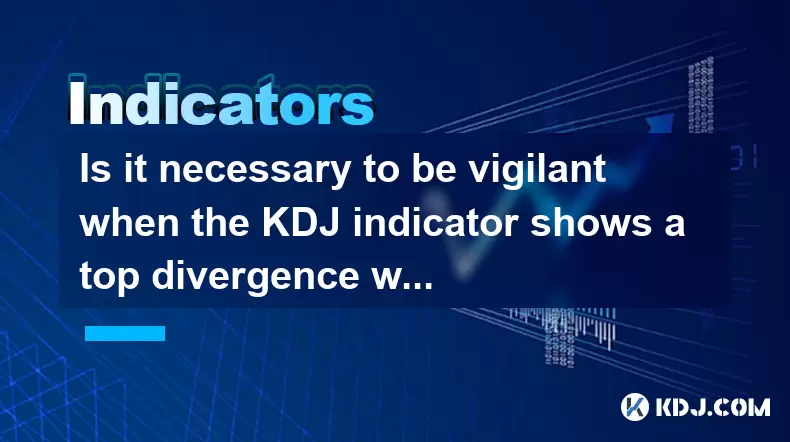-
 Bitcoin
Bitcoin $118000
0.67% -
 Ethereum
Ethereum $3750
0.71% -
 XRP
XRP $3.183
1.61% -
 Tether USDt
Tether USDt $1.000
-0.01% -
 BNB
BNB $788.1
1.21% -
 Solana
Solana $186.0
0.85% -
 USDC
USDC $0.9999
-0.02% -
 Dogecoin
Dogecoin $0.2373
1.25% -
 TRON
TRON $0.3204
1.76% -
 Cardano
Cardano $0.8266
1.85% -
 Hyperliquid
Hyperliquid $44.04
1.28% -
 Sui
Sui $4.192
5.88% -
 Stellar
Stellar $0.4399
2.63% -
 Chainlink
Chainlink $18.40
1.19% -
 Hedera
Hedera $0.2842
9.06% -
 Bitcoin Cash
Bitcoin Cash $560.5
2.46% -
 Avalanche
Avalanche $24.99
4.58% -
 Litecoin
Litecoin $114.5
1.25% -
 UNUS SED LEO
UNUS SED LEO $8.980
-0.03% -
 Shiba Inu
Shiba Inu $0.00001406
0.53% -
 Toncoin
Toncoin $3.306
4.27% -
 Ethena USDe
Ethena USDe $1.001
0.03% -
 Polkadot
Polkadot $4.169
2.37% -
 Uniswap
Uniswap $10.56
1.95% -
 Monero
Monero $322.8
1.06% -
 Dai
Dai $0.0000
0.00% -
 Bitget Token
Bitget Token $4.545
0.12% -
 Pepe
Pepe $0.00001261
1.29% -
 Aave
Aave $296.5
1.27% -
 Cronos
Cronos $0.1379
5.90%
Is it necessary to be vigilant when the KDJ indicator shows a top divergence when breaking through the previous high?
KDJ top divergence signals weakening momentum during breakouts—price hits new highs but KDJ doesn’t, warning of potential reversal; confirm with volume, candlesticks, and other indicators before acting.
Jul 26, 2025 at 10:36 pm

Understanding KDJ Indicator and Its Components
The KDJ indicator is a momentum oscillator widely used in technical analysis within the cryptocurrency trading community. It consists of three lines: the %K line, the %D line, and the %J line. The %K line reflects the current closing price relative to the price range over a specified period, usually 9 periods. The %D line is a moving average of %K, typically over 3 periods, and the %J line is calculated as 3×%K – 2×%D, making it more sensitive to price changes. Traders rely on the KDJ to identify overbought and oversold conditions, with values above 80 generally considered overbought and below 20 oversold.
In the context of cryptocurrency markets, which are known for their high volatility, the KDJ indicator helps traders assess momentum shifts. When the price of a cryptocurrency such as Bitcoin or Ethereum reaches a new high, but the KDJ fails to surpass its previous peak, this forms a top divergence. This scenario suggests weakening upward momentum, even as the price climbs, and is often interpreted as a potential reversal signal.
What Is Top Divergence in KDJ?
Top divergence occurs when the price makes a higher high, but the corresponding KDJ indicator forms a lower high. This mismatch between price action and momentum indicates that although buyers are pushing the price upward, the underlying strength of the rally is diminishing. In crypto trading, where sentiment and momentum play critical roles, such divergence can serve as an early warning sign.
For example, if Bitcoin reaches $70,000, surpassing its previous high of $68,000, but the KDJ’s %D line peaks at 78 this time compared to 85 in the prior peak, this constitutes a bearish divergence. The disconnection between price and momentum suggests that fewer buyers are participating in the latest surge, increasing the likelihood of a pullback.
Traders should note that divergence alone is not a confirmation of reversal. It merely signals a weakening trend and calls for caution. It becomes more significant when combined with other technical signals such as volume patterns, candlestick formations, or resistance levels.
Why Vigilance Is Required During Breakouts with KDJ Divergence
When a cryptocurrency breaks through a prior price high while exhibiting KDJ top divergence, traders must exercise heightened vigilance. The breakout may appear bullish on the surface, but the divergence suggests the rally lacks sustainable momentum. This situation is especially common in crypto markets, where pump-and-dump patterns or short-term FOMO (fear of missing out) can drive prices higher temporarily.
- Monitor the volume during the breakout — a low-volume breakout with KDJ divergence increases the chance of a false move.
- Observe whether the %J line is rolling over from overbought territory, which can signal imminent reversal.
- Check for resistance zones or historical price congestion near the breakout level, as these can amplify rejection.
- Consider the overall market sentiment — if the broader crypto market is showing signs of exhaustion, the divergence becomes more reliable.
Ignoring divergence during a breakout can lead to entering long positions at the peak of a move, resulting in significant drawdowns when the price reverses. Therefore, risk management becomes essential, including the use of stop-loss orders and position sizing adjustments.
How to Respond to KDJ Top Divergence in Practice
When encountering a breakout with KDJ top divergence, traders can adopt several tactical responses to protect capital and assess the situation objectively.
- Avoid immediate long entries — even if the price breaks a resistance level, the divergence warns of potential weakness.
- Set tighter stop-loss levels — if already in a long position, consider moving the stop-loss closer to lock in profits.
- Watch for confirmation signals — look for bearish candlestick patterns like shooting stars or bearish engulfing bars at the breakout point.
- Use additional indicators — confirm the divergence with tools like RSI, MACD, or volume profile to increase signal reliability.
- Wait for a pullback with reduced momentum — if the price stalls and begins to decline with increasing volume, it may confirm the divergence.
For example, on a 4-hour chart of Ethereum, if the price breaks $3,800 with KDJ %D forming a lower high than the prior peak, and the subsequent candle shows a long upper wick with declining volume, this reinforces the bearish divergence. Traders might then consider closing long positions or initiating short entries with defined risk parameters.
Common Pitfalls and Misinterpretations
Many traders misinterpret KDJ divergence due to incorrect settings or timeframe mismatches. Using too short a period (e.g., 5 instead of 9) can generate excessive noise, while too long a period may delay signals. The standard 9,3,3 setting is recommended for most crypto assets.
Another common mistake is acting on divergence without confirmation. Divergence can persist for extended periods in strong trending markets. For instance, Bitcoin may show multiple divergences during a parabolic rise before finally correcting. Acting on the first divergence could result in missed gains.
Additionally, traders often overlook the impact of market cycles. In bull markets, divergence signals may be less reliable due to sustained buying pressure. Conversely, in consolidating or bearish markets, divergence tends to carry more weight.
Frequently Asked Questions
What timeframes are best for detecting KDJ top divergence in crypto trading?
The 1-hour, 4-hour, and daily charts are most effective for identifying reliable KDJ divergences. Shorter timeframes like 5-minute or 15-minute charts generate too many false signals due to market noise, while weekly charts may be too slow for active crypto traders. The 4-hour chart offers a balanced view of momentum and trend structure.
Can KDJ divergence occur in sideways markets?
Yes, KDJ divergence can appear in ranging markets, but its significance is reduced. In sideways price action, the indicator often oscillates between overbought and oversold levels without clear trend direction. Divergence in such conditions may signal minor reversals within the range but is less predictive of major trend changes.
How do I adjust KDJ settings for different cryptocurrencies?
Most traders use the default 9,3,3 settings across all cryptos. However, for highly volatile altcoins, increasing the %K period to 11 or 13 can smooth the lines and reduce false signals. Always backtest adjustments on historical data before applying them live.
Should I use KDJ divergence alone to make trading decisions?
No, KDJ divergence should not be used in isolation. It is most effective when combined with price action analysis, volume trends, and other indicators like MACD or moving averages. Relying solely on divergence increases the risk of premature entries or exits.
Disclaimer:info@kdj.com
The information provided is not trading advice. kdj.com does not assume any responsibility for any investments made based on the information provided in this article. Cryptocurrencies are highly volatile and it is highly recommended that you invest with caution after thorough research!
If you believe that the content used on this website infringes your copyright, please contact us immediately (info@kdj.com) and we will delete it promptly.
- Meme Coins in July 2025: Bitcoin Takes a Backseat?
- 2025-07-27 10:30:12
- HIFI Price Eyes Breakout: Downtrend Line in the Crosshairs?
- 2025-07-27 10:30:12
- Troller Cat's Meme Economy Prowess: Presale ROI and Viral Domination
- 2025-07-27 10:50:12
- Bitcoin Price Tumble: Chart Patterns Point Downward?
- 2025-07-27 10:50:12
- Ethereum's Bullish Case: Flag Pattern Points to $4,800?
- 2025-07-27 11:10:18
- Ethena (ENA) & Anchorage Digital: A Genius Partnership Sparking a Stablecoin Revolution
- 2025-07-27 11:10:18
Related knowledge

What signal does the ROC send when it rises rapidly from a low level and breaks through the zero axis?
Jul 27,2025 at 10:15am
Understanding the Rate of Change (ROC) IndicatorThe Rate of Change (ROC) is a momentum-based oscillator used in technical analysis to measure the perc...

What does it mean that the rebound is blocked after the moving average is arranged in a short position for the first time?
Jul 26,2025 at 10:51am
Understanding the Short-Term Moving Average ConfigurationWhen traders refer to a 'short position arrangement' in moving averages, they are describing ...

What does it mean that the parabolic indicator and the price break through the previous high at the same time?
Jul 26,2025 at 07:22pm
Understanding the Parabolic Indicator (SAR)The Parabolic SAR (Stop and Reverse) is a technical analysis tool developed by J. Welles Wilder to identify...

What does it mean that the price falls below the short-term moving average after the RSI top divergence?
Jul 26,2025 at 11:01pm
Understanding RSI Top Divergence in Cryptocurrency TradingThe Relative Strength Index (RSI) is a momentum oscillator widely used in cryptocurrency tra...

What does it mean when the moving average is arranged in a bullish pattern but the MACD bar is shortened?
Jul 27,2025 at 06:07am
Understanding the Bullish Moving Average PatternWhen traders observe a bullish moving average pattern, they typically refer to a configuration where s...

What does it mean when the price rises along the 5-day moving average for five consecutive days?
Jul 26,2025 at 08:07am
Understanding the 5-Day Moving Average in Cryptocurrency TradingThe 5-day moving average (5DMA) is a widely used technical indicator in cryptocurrency...

What signal does the ROC send when it rises rapidly from a low level and breaks through the zero axis?
Jul 27,2025 at 10:15am
Understanding the Rate of Change (ROC) IndicatorThe Rate of Change (ROC) is a momentum-based oscillator used in technical analysis to measure the perc...

What does it mean that the rebound is blocked after the moving average is arranged in a short position for the first time?
Jul 26,2025 at 10:51am
Understanding the Short-Term Moving Average ConfigurationWhen traders refer to a 'short position arrangement' in moving averages, they are describing ...

What does it mean that the parabolic indicator and the price break through the previous high at the same time?
Jul 26,2025 at 07:22pm
Understanding the Parabolic Indicator (SAR)The Parabolic SAR (Stop and Reverse) is a technical analysis tool developed by J. Welles Wilder to identify...

What does it mean that the price falls below the short-term moving average after the RSI top divergence?
Jul 26,2025 at 11:01pm
Understanding RSI Top Divergence in Cryptocurrency TradingThe Relative Strength Index (RSI) is a momentum oscillator widely used in cryptocurrency tra...

What does it mean when the moving average is arranged in a bullish pattern but the MACD bar is shortened?
Jul 27,2025 at 06:07am
Understanding the Bullish Moving Average PatternWhen traders observe a bullish moving average pattern, they typically refer to a configuration where s...

What does it mean when the price rises along the 5-day moving average for five consecutive days?
Jul 26,2025 at 08:07am
Understanding the 5-Day Moving Average in Cryptocurrency TradingThe 5-day moving average (5DMA) is a widely used technical indicator in cryptocurrency...
See all articles

























































































